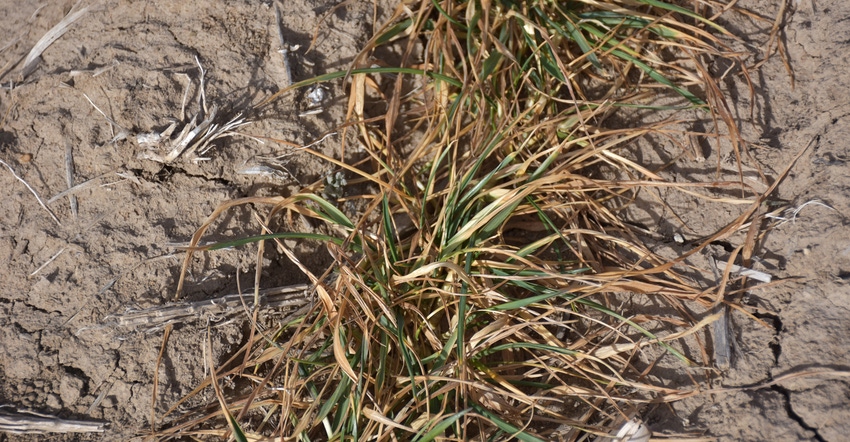
Almost the entire state of Kansas was in at least moderate drought with 24 counties in southwest and south central Kansas extreme drought on the U.S. Drought Monitor map released March 15.
Conditions have gotten worse week over week, with the area in severe to extreme drought increasing to more than half the state.
The extremely dry conditions, combined with warm temperatures and high winds are contributing to an extraordinary fire danger and the National Weather Service has issued “red flag” warnings repeatedly in the last month.
The extremely dry conditions are taking a toll on the hard red winter wheat crop as it comes out of dormancy and begins to use up what little topsoil moisture is available.
The first week of March saw an outbreak of fires in a dozen counties, but all were quickly contained. It was during early March of 2017 when the worst grassland fire in Kansas history ravaged 650,000 acres in Clark and Comanche counties.
Gov. Jeff Colyer has signed a drought declaration for all 105 counties in the state to provide assistance to farmers and ranchers as they cope with the impact the drought will continue to have on crops and livestock.
Already, hay supplies for the feedlots and dairies in southwest Kansas are short, and hay broker Roger Black in Cowley County says he has been buying baled corn stalks to help supply forage to his customers.
Black says a combination of large amounts of hay in storage being donated for fire relief last year and the year before, plus the very dry winter, then reduced forage available.
The drought declaration activates the disaster response efforts at the state level, and provides authority for the deployment and use of personnel, supplies, equipment, materials or facilities available to aid the drought response.
The declaration will also temporarily suspend certain motor carrier rules and regulations in order to expedite efforts to transport hay to livestock in drought-stricken areas.
In addition, the governor issued letters to the Kansas State Executive Director of the USDA Farm Service Agency and all county executive directors to encourage them to act quickly to review the situation on the ground and consider making a request to permit the use of acres enrolled in the Conservation Reserve Program for haying and grazing.
Granting access to CRP acres would provide critical forage resources for Kansas livestock, and would also reduce potential fuel loads to aid in fire suppression.
Secretary of Agriculture Jackie McClaskey attended the signing of the drought declaration.
“We are hopeful this early collaboration with our federal partners will allow for immediate relief to Kansas farmers and ranchers,” she said, “and we are committed to continuing to work with all of our partners through the duration of the current drought.”
57 counties in the state of Kansas are currently at D2 (severe) or D3 (extreme) drought levels. The U.S. Drought Monitor, used to track drought across the United States, identifies general areas of drought and labels them by intensity. The Kansas Drought Response team utilizes this data, along with projections from other sources, to make recommendations about necessary action for drought conditions. See the latest from the U.S. Drought Monitor at droughtmonitor.unl.edu.
Agriculture makes up 45% of the Kansas economy, and contributes $68 billion to the state. When the state experiences a drought, it can impact each and every Kansan, and KDA will continue to work with farmers and ranchers and all of our partners in agriculture to help provide access to the resources they need to cope with crop losses and impacts on livestock.
About the Author(s)
You May Also Like




